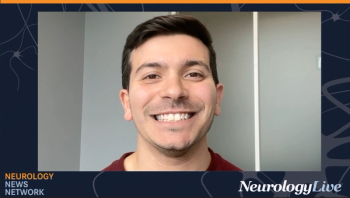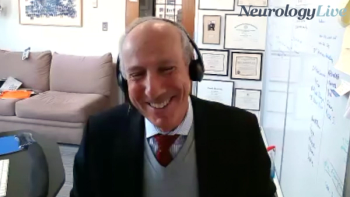
Innovative Therapies to Address Unmet Needs in Acute Ischemic Stroke: Shahid Nimjee, MD, PhD

The vascular neurosurgeon and professor of neurological surgery at The Ohio State University Wexner Medical Center spoke about advancements in stroke treatment, including endovascular thrombectomy and new drug therapies, that aim to address unmet need in patients. [WATCH TIME: 5 minutes]
WATCH TIME: 5 minutes
"Our goal in developing new therapies for stroke is not to only have something that's efficacious, but also to develop a therapy that is safe."
Each year 15 million patients experience stroke worldwide and of these, 5 million die and another 5 million are left permanently disabled, according to the World Health Organization.1 Furthermore, the annual direct stroke-related medical costs plus indirect costs because of premature mortality and loss of productivity are projected to exceed $826 billion by 2050 in high-income countries.2 Although intravenous recombinant tissue plasminogen activator (TPA) and endovascular mechanical thrombectomy (EVT) are available as a treatment for acute ischemic stroke (AIS), both are limited by time and clot location.
BB-031 (Basking Biosciences), an investigational agent, targets von Willebrand Factor (vWF) and is an RNA aptamer engineered to be capable of reopening blocked arteries beyond the therapeutic time window of standard of care. In 2023, Basking Biosciences announced positive phase 1 results that demonstrated safety and tolerability following a single intravenous dose ranging from 0.1 mg/kg to 4.0 mg/kg and dose-dependent patterns of vWF binding and changes in platelet function.2 The company noted that it plans to continue assessing BB-031 by initiating a phase 2 proof-of-concept trial called RAISE (NCT06226805) in patients with AIS sometime in 2024.3
Shahid Nimjee, MD, PhD, cofounder and chief medical officer of Basking Biosciences, recently sat down with NeurologyLive® in an interview to discuss that percentage of patients with stroke who currently receive treatment with TPA and EVT combined. Nimjee, who also serves as a vascular neurosurgeon and professor of neurological surgery at
REFERENCES
1. World Health Organization. Stroke, Cerebrovascular accident. Accessed May 22, 2024. https://www.emro.who.int/health-topics/stroke-cerebrovascular-accident/
2. Basking Biosciences Announces Close of $55 Million Financing to Accelerate Clinical Development for First Reversible Thrombolytic for Ischemic Stroke. News Release. Basking Biosciences. Published January 30, 2024. Accessed May 22, 2024. https://baskingbiosciences.com/news/basking-biosciences-announces-close-of-55-million-financing-to-accelerate-clinical-development-for-first-reversible-thrombolytic-for-ischemic-stroke/
3. Basking Biosciences Presents Positive Clinical Results from Safety and Dose-Escalation Study for First Reversible Thrombolytic Agent at ISC 2023. News Release. Basking Biosciences. Published February 9, 2023. Accessed May 22, 2024. https://baskingbiosciences.com/news/basking-biosciences-presents-positive-clinical-results-from-safety-and-dose-escalation-study-for-first-reversible-thrombolytic-agent-at-isc-2023/
Newsletter
Keep your finger on the pulse of neurology—subscribe to NeurologyLive for expert interviews, new data, and breakthrough treatment updates.



































